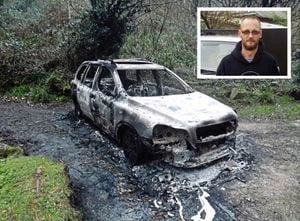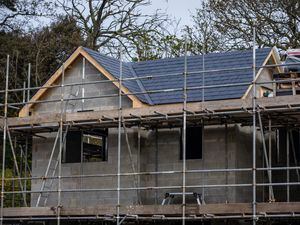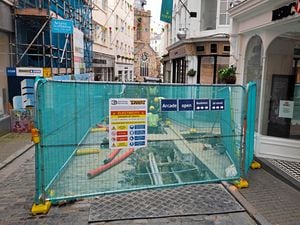Open verdict recorded into death of Mikus Alps
MIKUS ALPS died as a result of a shotgun wound to the head, an inquest into his death concluded, although it could not be said for certain if this wound was self-inflicted.

An open verdict was recorded.
During the hearing it was said that despite rumours that Mr Alps was killed by Russians, Guernsey Police could not substantiate this.
HM Procureur Megan Pullum gave a detailed statement which included information on the investigation, during which Guernsey Police liaised with a Home Office pathologist and a team of experts in ballistics and anthropology and a consultant clinical and forensic radiologist.
The remains of Mr Alps, 33, were found in a burnt-out car near Petit Bot on 10 January, 2018.
The procureur said that two days earlier, he had called two friends, at 2.46am and just before 3.30am, and both had said they thought they heard another person present, possibly with a foreign-sounding voice. Police could not substantiate this.
After the burnt-out car was discovered just before 7.30am on 8 January, police and the fire service attended. Given that anything in and around the vehicle that could catch fire had done so and there was no risk of it re-igniting, it was decided to leave it.
Two days’ later, after Mr Alps’ was reported missing, scenes of crime officers visited the scene and noticed the remains of a body in the driver’s sea.
DNA evidence later identified this as Mr Alps.
The remains of a shotgun, registered to Mr Alps, were also found and there was evidence that one shot had been fired.
Toxicology tests found traces of the class A drug MDMA in Mr Alps’ remains, as well as the class B drugs amphetamine and Butylone, which the Procureur said was ‘a relatively new designer drug with intended effects being mild psychic stimulation and euphoria’.
There were also traces of Diclofenac, prescribed for the relief of musculoskeletal and rheumatic disease pain.
In his report, the Home Office pathologist commented that generally the scenario of a fire-damaged body in a burnt-out vehicle with evidence of shotgun discharge was suggestive of the involvement of others.
Subsequent expert analysis of the remains and the position of the shotgun concluded that there were two ways in which the fatal wound could have been inflicted, only one of which could have been by Mr Alps himself.
‘Given the condition of the body, the experts agree it is not possible to favour either scenario,’ said the Procureur.
The pathologist concluded that cause of death was a shotgun wound to the head, although the chance of contribution from other injuries and/or the effects of fire and/or the effects of drugs could not be excluded.
Despite previously being depressed and expressing potentially suicidal thoughts, and a sombre and reflective letter given to a friend on 7 January, she said there was no evidence to suggest that Mr Alps intended to take his own life.
In returning an open verdict, Judge Graeme McKerrell said he found the cause of death to be in accordance with the Home Office pathologist’s report.
He extended the court’s sympathies to Mr Alps’ family and friends and gave approval for his remains to be repatriated to Latvia.
n A separate police investigation revealed evidence that Mr Alps was involved in the possession of firearms and supply of controlled drugs prior to his death.





